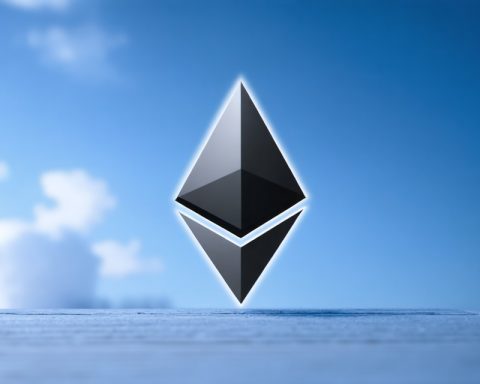Space Exploration Breakthrough
The Indian Space Research Organisation (Isro) is making waves with its SpaDeX mission, as two spacecraft hover 1.5 kilometers apart, currently in a temporary hold mode. A new update reveals that Isro aims to decrease this gap to just 500 meters by tomorrow morning, January 11, 2025.
Initially slated for docking on January 7, the SpaDeX mission encountered delays due to unexpected drifting during satellite maneuvers. However, on January 9, Isro reassured the public that the drifting had been halted, allowing the spacecraft to begin a controlled approach to each other.
The SpaDeX mission serves as a pivotal technology demonstration for India, highlighting the nation’s potential in in-space docking operations. Launched aboard the PSLV-C60 rocket on December 30, 2024, the mission involves two small spacecraft: SDX01, the chaser, and SDX02, the target. Their key objectives include testing rendezvous and docking capabilities, essential for future initiatives such as lunar missions and the creation of a space station.
Isro’s leadership stresses the mission’s critical role in advancing India’s aspirations for space exploration. Following successful docking, the spacecraft will showcase power transfer between them before they carry out their designated operations. As the timeline narrows, Isro remains vigilant, promising to keep the public informed about this exciting journey into the cosmos.
India’s Space Ambitions Soar: The SpaDeX Mission’s Next Big Leap
Overview of SpaDeX Mission
The Indian Space Research Organisation (ISRO) has taken significant strides in space exploration with its ambitious SpaDeX mission, a technology demonstration that is pivotal for future endeavors in in-space operations. Currently, the two spacecraft involved, SDX01 (the chaser) and SDX02 (the target), are positioned 1.5 kilometers apart, with plans to narrow this distance to 500 meters by January 11, 2025. The mission aims to showcase India’s growing capabilities in rendezvous and docking operations, crucial for prospective lunar missions and the development of an indigenous space station.
Key Features of the SpaDeX Mission
– Launch and Objectives: SpaDeX was launched aboard the PSLV-C60 rocket on December 30, 2024. Its primary objectives include testing the precision of satellite maneuvers, docking, and inter-space power transfer.
– Controlled Approach: After a brief setback due to satellite drift, ISRO announced on January 9, 2025, that the controlled approach has commenced, indicating that the two spacecraft can now work towards a successful docking.
– Future Missions: Success with SpaDeX will set the stage for future Indian missions, including collaborative efforts with international space agencies and potential establishment of a manned space station.
Pros and Cons of the SpaDeX Mission
Pros:
– Technological Advancement: Demonstrates ISRO’s capability in advanced space technologies.
– Significance for Future Missions: Essential for lunar landings and establishing a space station.
– Increased International Collaboration: Opens avenues for working with other countries on future space projects.
Cons:
– Technical Challenges: Space missions inherently carry risks of technical failure.
– Increased Costs: Advanced missions can be costly and resource-intensive.
– Public Expectations: High-profile missions can lead to increased public scrutiny and expectations.
Comparisons: ISRO’s SpaDeX vs. Other Space Missions
When comparing the SpaDeX mission to similar docking missions by other space agencies:
– NASA’s Artemis Program: Focuses on returning humans to the Moon, incorporating advanced docking technologies.
– SpaceX’s Crew Dragon: Successfully docked with the International Space Station, showcasing reliable autonomous docking.
Limitations and Challenges Ahead
While the SpaDeX mission marks a significant step forward, there are inherent limitations:
– Environmental Factors: Space is unpredictable; various factors can affect docking operations.
– Technical Hurdles: Issues with onboard systems can arise, requiring rapid adjustments.
Innovations and Insights from the SpaDeX Mission
The technological innovations expected from SpaDeX are numerous:
– Automated Docking Systems: Development of sophisticated algorithms for future missions.
– In-Space Power Transfer: Experimentation with energy transfer protocols, which could facilitate long-duration missions.
Pricing and Funding Considerations
While exact costs of the SpaDeX mission have not been publicly detailed, ISRO’s budget reflects government commitment to space exploration. Investments in such missions are anticipated to yield high returns in scientific knowledge and international prestige.
Market Analysis and Future Predictions
As India advances in space technology, the market for satellite launches and space exploration is expected to expand. ISRO’s proven capabilities may attract commercial partnerships, positioning India as a competitive player in the global space industry.
Conclusion
The SpaDeX mission represents not just a leap forward for India’s space program, but also a demonstration of technological prowess that could lead to significant advancements in global space exploration initiatives. ISRO’s commitment to transparency and its promise to keep the public informed enhances its advocacy for support in future projects.
For more information, visit the official ISRO website at ISRO.

















